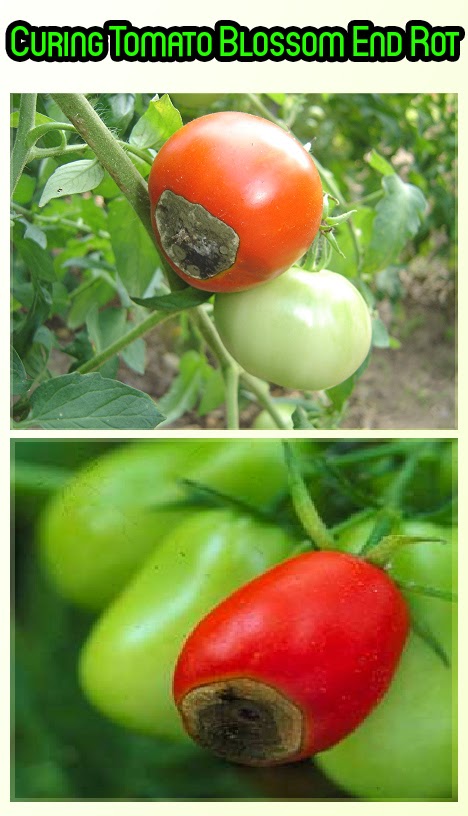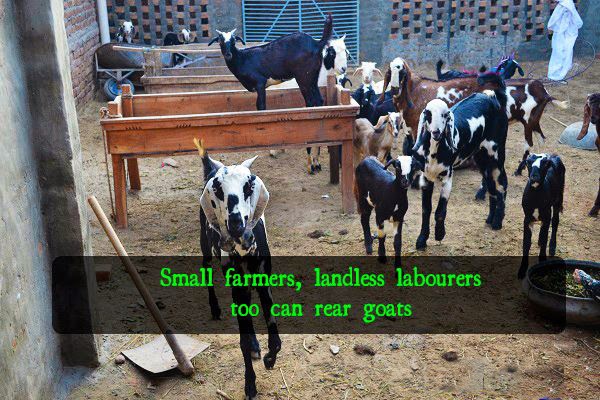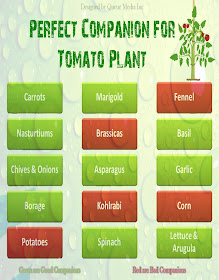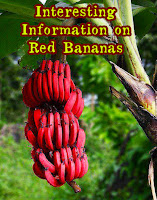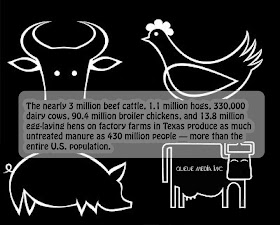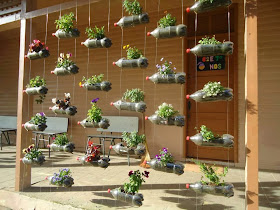Tuesday, 5 November 2013
Curing Tomato Blossom End Rot
If you are gardening tomatoes at your home garden you may have encounter the particular problem on the blossom end of the fruit. Although this problem also appear in eggplants and peppers too.
It is distinguish by a brownish, depressed leather like area with a size varies from dime to dollar coin or may be more. It make the tomato unfit to sell if not consume.
Causes :
The main culprit of the problem is the deficiency of the calcium in soil coupled with the erratic supply / access of water by the plant. However careless pruning of vines and hoeing also contribute to the problem.
Treatment:
- If you find any fruit affected with the rot, pluck it from stem immediately.
- Keep the soil moist every time especially during hot / dry seasons. You can use pet bottle irrigation for this purpose.
- Use mulching technique to capture the moisture in the soil for longer duration.
- In order to increase the calcium content in the soil one can add grounded egg shells in the soil
- Stop hoeing and cultivating other plants near the plant.
- You can use the products below to improve the condition of tomato plants in your garden
Monday, 4 November 2013
Small farmers, landless labourers too can rear goats
From time immemorial Indian peasants have always been rearing animals for extra income.
But now all this is changing, with shrinking pasture lands and scarcity of green fodder, rearing farm animals is being considered un-remunerative.
To encourage small farmers and landless labourers to take up goat cultivation without having to spend much, scientists from Peruvannamuzhi Krishi Vigyan Kendra of the Indian Institute of Spices Research (IISR) have fine-tuned a technology.
CAREFUL PLANNING
“Our veterinary experts, through careful planning and breeding charts, have been able to fully exploit the reproductive efficiency of female goats. In a large herd, synchronization of estrus cycle by administering PGF2 alpha injection and timely breeding by using good quality frozen semen or natural service by superior male enhances not only conception rate for a female goat, but also the farmer can bring most of the females in a herd to deliver (kidding) at a specified period. In a herd of 50 animals, we can bring 10 or 20 goats to deliver in about 150 days at a time by this method. It is a boon to the farming community,” says Dr. M. Anandaraj, Director of the institute.
The institute has also formulated a technique for raising the goat kids. After 15-30 days the kids are housed inside a shed that is made of bamboo or wood with plenty of sunlight and ventilation for 120-140 days before being sold.
ONCE A MONTH
Once in a month the kids are also allowed to suckle from its mother 2-3 times a day before completely weaning them away.
Animals grown under this method attain 25-33 kg of body weight in 4-5 months compared to those animals grown under conventional method that attain only 10 kg in six months.
Initially the kids after being weaned away from their mother are fed small quantities of concentrated feed prepared specifically by the institute's experts.
Depending on the consumption, the feed quantity is slowly increased. Additionally liver tonics mixed with fish oil are also given to increase appetite and aid good healthy growth.
Clean water is made available all through the day.
The expense for feeding one kid comes to about Rs.1,200 a month and a net income of Rs.5,000 to Rs.7,000 can be got in some months by selling the kids.
This feed is also available in the market in some commercial brand names and farmers can also make them by mixing rice, wheat, maize, horsegram etc.
CONTACT
“Farmers can contact the institute at the address given below to clarify their doubts and learn more about this,” says Dr. S. Shanmughavel, animal science specialist of the Institute.
Various women self help groups and several individual farmers in Kozhikode district, Kerala, have started to rear goats in this method for the past few years.
Low cost, better return and easy management are some of the favourable factors that motivate farmers to take up this technique.
This has become a flagship programme of our Kendra because it helps rear more number of goats in a short span of time.
“The biggest advantage is that those who have only few cents of land can also grow goats. We need not spent much time grazing them out in the open. Managing a dozen goats is not a big task now for landless workers or small farmers,” says Dr. Shanmughavel
SUCCESS
The success of this technology is not confined to Kerala alone. Farmers from other states like Karnataka, Tamil Nadu, Andhra Pradesh, and Gujarat are visiting the Institute to learn more about this method.
For more details readers can contact Dr. S. Shanmughavel, Subject Matter Specialist (Animal Sciences), Krishi Vigyan Kendra, Peruvannamuzhi Post, Kozhikode: 673 528, Kerala, email: kvk@spices.res.in, Phone:0496-2662372. and also log on to YouTube Channel (http://www.youtube.com/iisrcalicut) to watch a documentary film on broiler goat rearing practice.
Tomato Companion Plants
Are you a tomato gardener and worried due to not getting good yield? No try planting tomatoes with the plants in green and avoid those who are red. By companion planting not only you can get a better harvest but companion plants might deter the pest for your tomatoes.
Top 10 apples to grow in your garden
 |
| Bumper crop: a mixed basket of apples from the Aspall estate in Suffolk. The family has been growing cider apples for eight generations |
We have the best climate in the world for apples, so why do we grow so few varieties? A leading orchard owner recommends 10 to try at home
By Sarah Raven
The Telegraph
This year looks like being a vintage apple crop. The spring rain was good for blossom and we've had plenty of sunshine since – but not baking drought – which is just what makes an apple particularly tasty. There's plenty of sugar in the fruit, along with quite high levels of acidity, the perfect balance for flavour.
The apple-growing community is loving 2013, and are on a campaign for us all to plant more trees. We should be adding them to our gardens and underused public spaces. In apple-growing counties such as Suffolk, Herefordshire and Kent community orchards are already being encouraged.
Henry Chevallier Guild, eighth generation of the apple-growing Aspall cider family, is a leading advocate. As he says, Britain has one of the best climates in the world for apples. In the 19th century we used to make the most of that, with 2,500 different varieties listed in the UK, but that's now declined to only 12 that you'll commonly see. It's even quite rare to see a whole orchard of Cox varieties.
The most widely grown apples are now modern hybrids such as 'Gala', 'Braeburn', 'Jazz' and the similar 'Kanzi', along with 'Idared' and 'Falstaff'. These are OK and travel well, but they're not the best for flavour, whether eaten or made into juice or cider. For that, you need Coxes, Spartans and Russets: traditional varieties that have done well here for decades but which are on the wane.
Aspall's estate in Suffolk is entirely organic and, as Henry says, if you choose the right forms, growing apples in your back garden without chemicals is easy. I'm tired of my home-grown apples being riddled with scab, so I am keen to find tasty, disease-resistant forms which will give me a decent harvest. That's the primary requirement of Henry's top 10 apples listed overleaf, but they'll all be helped – as Henry says – if they're planted with a walnut or garlic nearby.
How this companion planting works is not well understood, but it is regarded as an effective way to help prevent scab. There is some symbiotic relationship between the scab spores and walnuts or garlic which means the apple tree stays scab-free. In the apple forests of Kazakhstan (from where all apples trace their genealogy), there is plenty of scab spore about but none of the trees have it. At ground level there are many bulbs, and it is widely believed that they perform the same job.
Henry gives me his list of top varieties but, when pushed to name his desert island apple, he decides on 'Howgate Wonder', a brilliant all-rounder, supremely tasty and easy to use in so many different ways.
HENRY'S TOP TEN APPLES
1. 'Chivers Delight'
This is a late flowerer and cropper referred to in the trade as a 'Cox Plus'. It has as much flavour (if not more) than 'Cox's Orange Pippin' and better acidity, which it keeps in storage. Cox famously go woolly quickly in storage, whereas the flesh of 'Chivers Delight' remains firm and nutty. This fell out of commercial favour because of its colour irregularity. If the sun is on it, the fruit goes red, but it will not colour up on the shady side. This does not affect the flavour but makes them difficult to sell.
2. 'Spartan'
Nothing has the same richness of colour as 'Spartan', a lovely deep plum red, with almost bright white, contrasting flesh. It's a beautiful apple, which stays late on the tree and makes a fabulous eater with very juicy fruit. It's the one I use at Perch Hill for Christmas wreaths and, being a good storer, is widely available late in the year.
3. 'Blenheim Orange'
A fabulously aromatic, peppery, almost spicy apple with a softer nuttiness than you get with the similar-flavoured 'Egremont Russet'. This variety is a bit prone to scab, so is best grown on its own and certainly away from very scab-prone varieties such as 'Crispin'.
4. 'Egremont Russet'
A famous apple with a wonderful nutty, woody texture and a very characteristic taste, floral and heady, so you can almost smell the blossom. It stores well, with the flavour deepening to honey.
5. 'Pitmaston Pineapple'
This is a very unusual apple, difficult to find but, in Henry's view, worth the effort. It eats like a 'Greensleeves' early on, but you can store it until April when the flavour morphs into pineapple.
6. 'Greensleeves'
A light, crispy, full-of-flavour apple, lovely and crunchy straight off the tree. This is the one 'Golden Delicious' aspires to be, with excellent flavour in a beautiful pale yellow fruit.
7. 'Discovery'
This is one of the first to harvest (in August), so Henry loves it for reminding us what we've been missing all summer. If we get a sunny July and August, the redness leaches from the skin into the flesh. Then if you press it, you'll have a beautiful pale pink juice.
8. 'Worcester Pearmain'
A rich, creamy apple with a really strong flavour, one of the original varieties brought over by the Normans. It's just about surviving in the UK, but you don't see it often, apart from in the Wye Valley where it's usually pressed into juice.
9. 'Howgate Wonder'
A great all-rounder apple – a good cooker early on, it also presses well and mellows the later you leave it, with the acidity dropping away, so it can be eaten as a dessert apple from the store or tree. It's one of the few varieties where you can leave the fruit on the tree, start harvesting in August and carry on until the end of October at least. It performs well whatever the weather and is often a challenger for the largest fruit.
10. 'Médaille d'Or'
Henry's final recommendation is this wonderful bittersweet cider apple, still abundantly on the tree, until the end of November. The tree's appearance is unique – "there's a Grand Dame feeling about them, which reminds me of my grandmother," he says, "knotted and gnarled in the winter and very late to blossom in the spring. You think they're dead and then out the flowers come towards the end of May". The fruit is small and very acid, essential tannin for flavouring cider.
This is one of the great cider apples and one that – if you have the room for two trees and fancy a bit of cider-making – would be good to grow. Mix 50/50 with an acid apple such as 'Howgate Wonder' and you're away. Then you have the tannin from 'Médaille d'Or' and acidity from 'Howgate Wonder' and both have good sugar levels.
They are pruned to weep in the Aspall orchards, with graceful branches arching down almost to ground level. You can get right in underneath and be enclosed in an apple den.
Red Banana
Red bananas, also known as Red Dacca bananas in Australia, are a variety of banana with reddish-purple skin.
They are smaller and plumper than the common Cavendish banana. When ripe, raw red bananas have a flesh that is cream to light pink in color.
They are also softer and sweeter than the yellow Cavendish varieties, with a slight raspberry flavor. Many red bananas are imported from producers in Asia and South America. They are a favorite in Central America but are sold throughout the world.
Red bananas are eaten in the same way as yellow bananas, by peeling the fruit before eating. They are frequently eaten raw, whole or chopped, and added to desserts and fruit salads, but can also be baked, fried and toasted.
Red bananas are also commonly sold dried in stores.
Sunday, 3 November 2013
Texas Manure Fact
The nearly 3 million beef cattle, 1.1 million hogs, 330,000 dairy cows, 90.4 million broiler chickens, and 13.8 million egg-laying hens on factory farms in Texas produce as much untreated manure as 430 million people — more than the entire U.S. population.
Saturday, 2 November 2013
Colorful Plants for Shade
Shady areas of the garden needn't be dull as there are lots of attractive plants that will thrive in low light conditions.
Osmunda regalis, Royal fern
- Latin name: Osmunda regalis
- Common name: Royal fern
- Type of plant: Fern
- Hardiness: Hardy
- Flower colour: N/A
- Leaf colour: Bright green
- Height and spread: 2m x 1m (6.6ft x 3.3ft)
Description:
This handsome deciduous fern has bright green fronds. In summer, rust-brown fertile fronds appear, which look a bit like flowers. Needs moist soil.
Vinca, Periwinkle
- Latin name: Vinca
- Common name: Periwinkle
- Type of plant: Ground cover
- Hardiness: Hardy
- Flower colour: Purple-blue
- Leaf colour: Dark green
- Height and spread: 30cm x 1m (1ft x 3.3ft)
Description:
These evergreens make useful ground cover in shady spots. They are vigorous growers so cut them back hard each spring to keep them under control.
Mahonia
- Latin name: Mahonia
- Common name: Mahonia
- Type of plant: Shrub
- Hardiness: Hardy
- Flower colour: Bright yellow
- Leaf colour: Dark green
- Height and spread: 1m x 1.5m (3.3ft x 4.9ft)
Description:
These evergreen shrubs have attractive spiky leaves which are loved by flowers arrangers. In winter, they bear scented, yellow flowers which are followed by bluish fruits.
Camellia, Camellia
- Latin name: Camellia
- Common name: Camellia
- Type of plant: Shrub
- Hardiness: Frost-hardy
- Flower colour: White to pink or red
- Leaf colour: Dark green
- Height and spread: 5m x 4m(17ft x 13.1ft)
Description:
Well known for their colourful flowers which brighten the garden in spring. They need acid soil to thrive. Can be grown in containers of ericaceous compost.
Helleborus foetidus, Stinking hellebore
- Latin name: Helleborus foetidus
- Common name: Stinking hellebore
- Type of plant: Hardy perennial
- Hardiness: Hardy
- Flower colour: Green
- Leaf colour: Deep green
- Height and spread: 30cm x 30cm (1ft x 1ft)
Description:
Easy to grow, even in dry shade this tough evergreen perennial bears green flowers in winter. Cut out stems
BBC
The Forest on an Abandoned Ship
There is an island in the Maroni River that was formed by a British ship that ran aground!
The British ship Edith Cavell now looks more like a forest than a boat. The British ship was first launched in 1898.
The steamer was on a trip to St. Laurent de Maron (present day French Guyana) when she ran aground in the Maroni River.
She broke in two and was unable to continue. The crew was forced to abandon her. Her life was not done though. From there, the Edith Cavell became overgrown with plants.
The ship was carrying some general cargo, some of which contained seeds. The seeds managed to germinate in the mud and water and, over a period of 36 or so years, the ship slowly began to sprout trees and formed the nameless island.
Today, she looks more like an island of foliage in the middle of the river than a ship.
Friday, 1 November 2013
This grape story could ring in a revolution
K. SRINIVAS REDDY
The Hindu
 |
| Chinthala Venkat Reddy at his grape garden in Ranga Reddy district. Photo: K. Srinivas Reddy |
If you have sun-dried soil, you could usher in a revolution. A grape farmer’s innovation in Ranga Reddy promises a bumper crop, sans fertiliser, pesticide and all
Can dried soil replace fertilisers and pesticides?
If the results of a novel Soil Management (SM) technique — developed by a farmer from Ranga Reddy district — are any indication, the crop yield would go up at least by half, drastically reducing the farm input cost component, even while preserving the soil eco system.
Agricultural scientists have been visiting a grape garden on the city outskirts, where the SM technique is employed by a Chinthala Venkat Reddy, a progressive farmer, leading to a phenomenal increase in yield.
Top-notch
The grapes harvested in this garden are the sweetest and the best in quality in terms of crispiness of the fruit and berry size, vouchsafe scientists of the Dr. YSR Horticultural University and the Krishi Vignan Kendra of the Indian Council of Agriculture Research (ICAR).
The technique developed by Mr. Venkat Reddy is rather simple. The sub-soil from a paddy field is scooped up using hydraulic earth movers and dried in open air during summer. This dried soil is sprinkled at the stem of the plant periodically.
“Each plant needs specific nutrients. For example, the soil nutrients needed by paddy and grape are different. When you scoop soil from a paddy field, the soil will have plenty of nutrients needed by grape plant. When the plant gets the nutrients it needs, it grows healthily without fertiliser support”, he explains.
Phenomenal yield
With this technique, Mr. Venkat Reddy (Phone: 986-688-3336) has been able to get a yield of 30-32 tonnes of grape per acre, while his counterparts in other gardens, who make use of pesticides, fertilisers and organic manure, get a yield between 20 and 25 tonnes.
“Going by the healthy plants in the garden and the grape fruits yet to be harvested, the yield could touch 40 tonnes per acre this year. It’s nothing short of a miracle,” exclaims G. Satyanarayana, Joint Secretary of ICAR’s Krishi Vignan Kendra, Gaddipalli, Nalgonda.
Dr. Satyanarayana, who has been visiting the farm, says the technique is a boon for the farming community as it is not an experiment done in a one-acre farm. There has been consistency in grape yield over the years.
Impressed by innovation and consistent high-yields at lowest cost, the centre is getting ready to do a systematic analysis of the SM technique by agricultural scientists under the Rashtriya Krishi Vignan Yojana (RKVY) Scheme, informs. B. Srinivas Rao, Principal Scientist at the Grape Research Station in Rajendranagar, Hyderabad.
Mr. Venkat Reddy claims to have tried out the technique in growing paddy and wheat too, yielding good results in the process. Encouraged by the consistency, he has also applied for a national patent for the technique. The claim has been published by the Indian Patent Office in June 2012.
How to Make Tulips Stand Up Straight in a Vase
To keep tulips standing straight and tall, first cut the stem tips with a sharp knife While still wrapped, place immediately in water, allowing them to draw water for five to six hours. Then remove wrap, arrange flowers and enjoy!
Thursday, 31 October 2013
Thrips Management in the Home Garden
Diane G. Alston, Entomologist
Daniel Drost, Vegetable Specialist
Thrips will infest onions, garlic, and other vegetables in the home garden, but small-sized plots are generally not at risk for significant yield loss.
Thrips in the home garden are best managed with cultural practices and natural biological control.
The following are generally adequate to keep thrips from noticeably reducing onion growth and bulb size in the home garden:
- add compost to enhance organic matter and soil tilth; use mulches;
- plant onions and garlic in small plots surrounded by a diversity of other plants, including garden crops, herbs, and cultivated and wild flowers;
- apply a stiff spray of water from a hose to wash thrips from plants when they are observed;
- and avoid using broad-spectrum, toxic insecticides to preserve natural enemies that keep onion thrips populations low.
Wednesday, 30 October 2013
Poor Amazon farming community scores land victory
After more than a century of struggle, poor Brazilian farming families along the Tapajos river, a tributary of the Amazon, have won rights to their land, reports Sue Branford from Para state.
Their victory is being hailed as a remarkable recognition by the authorities of the rights of a traditional community over the interests of powerful economic groups.
The move is surprising because it runs counter to the government's plan to build a series of hydroelectric dams on the river, which would flood the land now granted to the families.
The decision creates a real dilemma for the government.
If it is to press ahead with the dams, it will now have to relocate these families to a comparable location, which it cannot do without expelling other communities and creating further conflicts.
Unexpected decision
Luiz Bacelar Guerreiro Junior, who is the superintendent for Brazil's National Institute of Colonisation and Agrarian Reform (Incra) in the area, is the man behind the unexpected decision to give the settlement in Montanha-Mangabal the green light.
"I am very proud to be ending a struggle like this one, giving rights to those who deserve them," said Mr Bacelar.
He has given the 550-sq-km area the status of an Agro-Extractive Settlement Project (PAE), which recognises the rights of families to continue occupying the land the way it has been occupied by their ancestors. The land cannot be sold.
When asked if he had faced opposition from powerful economic interests, Mr Bacelar replied: "I didn't listen. I did what had to be done and that's it."
Recognising rights
It is a development which Felipe Fritz Braga has welcomed.
Mr Braga is a prosecutor in the Federal Public Ministry, an independent branch of the government which defends the rights of disadvantaged groups within Brazilian society.
"The recognition of Montanha-Mangabal by the Brazilian state is an unmistakeable act of true and effective agrarian reform," he said.
"It is the first time the federal government recognises the antiquity of the occupation of this land by these communities and treats them as people having fundamental rights, especially rights to the land."
Conservation success
The Montanha-Mangabal hamlets were formed in the second half of the 19th Century, when hundreds of poor farmers from the north-east of Brazil migrated to the region to tap rubber.
After the collapse of the rubber boom early in the 20th Century, many were trapped in the region, without means of earning a living or the money to pay for the 2,000-km (1,200-mile) trip home.
Stranded far away from home, some of the men, most of whom were single, kidnapped women from neighbouring indigenous groups and settled down with them.
Seventy-five-year-old Dona Raimunda Araujo, remembers her family talking about the way her grandfather "stole" her grandmother, a Munduruku Indian.
She says the women brought to the rubber-tapper communities centuries' worth of indigenous knowledge about the ecology of the Amazon forest.
This helps to explain why, even though they fell small areas to plant crops, the communities have some of the best-conserved forest in the region.
Threats
But in recent years the families have struggled to retain possession of their land.
The first threat came in the 1970s, at a time when it was widely believed that forests had to be empty of people to be conserved.
It was at this time that the federal government expelled the families from their homes to set up the National Park of Amazonia.
But they soon regrouped, settling higher up the river.
In 2006, it seemed as if the families' right to the land was finally to be assured.
They went through the long and difficult process of becoming a "Resex" (extraction reserve), a type of reserve created by the Brazilian state to protect traditional forest dwellers.
It would have given the families very strong rights over their land, stronger than they have with the PAE, but it had to be signed off by the then-President, Luiz Inacio Lula da Silva.
To the families' dismay, he refused to sign the necessary decree.
The president's reluctance was widely attributed at the time to the fact that the government was planning a series of hydroelectric dams along the Tapajos river.
Part of the energy was to go to mining companies, as vast mineral wealth, particularly gold, had been discovered in the region.
This is why indigenous and land right activists are hailing Mr Bacelar's decision as bringing at least a partial victory to a community that has struggled against the odds for many years.
Yet their struggle may not yet be over. It is still unclear how the pro-dam lobby and mining companies will react to Incra's defiant act.
Additional reporting by Natalia Guerrero.
Tuesday, 29 October 2013
Tips on growing strawberries in the home garden
By Roy Lee Carter
Gulf County Extension Director
Strawberries can be grown in home gardens throughout the state. Temperatures between 50 to 80° F (10 and 27°C) and day lengths 14 hours or fewer are required for the development of flowers and fruit on most strawberry varieties.
In the U.S. these conditions occur only for a short period in late summer or fall, and again briefly in spring. In our area, however, this combination of day length and temperature exists for much of the fall, winter and spring. Single-crown (stem) strawberry plants are planted in Florida during the fall, from late September to early November. Flowering and fruit production generally beings in November and continues into April or May. Fruit production over this period is not constant, but occurs in two or three cycles, and can be interrupted by freezing weather. Because the highest quality fruit are produced on relatively young plants with not more than four or five branched crowns, plants are usually tilled under at the end of the fruiting season, and new plants are planted the following fall.
Currently, we suggest three varieties for the Florida home garden: Camarosa, Sweet Charlie, and Festival, all three varieties produce attractive, flavorful berries suitable for eating fresh or for freezing. Camarosa has been the most productive variety in North Florida, while Festival has been the most productive variety in Central Florida. These varieties are capable of producing 1 to 2 pints of fruit per plant over the season. Strawberries grow best in a location receiving at least 8 hours of direct sunlight per day. If a full sun location is not available, try to choose a spot that is sunny during the morning and early afternoon. The soil should be well drained and slightly acidic (pH 5.5 to 6.5).
IFAS specialist recommends planting strawberries on raised bed which are two feet wide and spaced two feet apart. The beds should be mounded so they’re six inches high along the edges and about eight inches high in the middle.
In preparing the beds you begin with fertilization. For a ten-by-ten foot strawberry patch, broadcast about two-and-a-half pounds of 8-8-8 fertilizer and till it into the soil. Then from the beds and apply another two-and-a-half pounds of fertilizer this time in a narrow band about six inches deep down the middle of the beds. If you’re just starting to grow strawberries you should also include a complete mixture of minor elements in the first season fertilizer application.
When the bed is properly formed, fertilized and moistened, cover with a sheet of landscaping mesh fabric which will block weeds and allow water to penetrate. The, cut slits in the fabric where the plants will be inserted. Plants should be set in double rows, one row on each side of the bed about six inches from the edge. Plants should be spaced 12 inches apart in the row. Be sure that no plants are set directly over the fertilizer band down the middle of the bed because this can lead to salt burn.
Be sure to use certified, disease-free plants. Keep them moist before planting and plant in moist soil. Spread the roots in a fan shape, set the plant at the correct depth in the soil, and pack the soil firmly around the roots.
For more information on growing strawberries contact the Gulf County Extension Service @ 639-3200 or visit our website: http://gulf.ifas.ufl.edu or www.http://edis.ifas.ufl.edu and see Circular HS 1154
Monday, 28 October 2013
10 Houseplants That Clean Indoor Air
Aloe Vera - Not only can it be used for burns on the skin, it is also known to remove formaldahyde from the air.
Areca Palm - General air purifier, especially as it grows larger. It's known for being one of the better performers in purifying the air.
Baby Rubber Plant - These houseplants clean the air by emitting high oxygen content, and purifies indoor air by removing chemicals, such as formaldahyde or other toxins.
Bamboo Palm - According to NASA, it removes formaldahyde and is also said to act as a natural humidifier.
Boston Fern - Said to act as a natural air humidifier, removes formaldahyde and is a general air purifier. Said to be among the best in air purifying houseplants.
Chinese Evergreen - Emits high oxygen content, and purifies indoor air by removing chemicals, such as formaldahyde, benzene or other toxins.
Mass Cane - Known for removing formaldahyde and known generally as one of the houseplants that clean the air.
Pygmy Date Palm - Said to remove formaldehyde and xylene (a chemical found in plastics and solvents) from the air.
Ficus alii - Said to be a great overall air purifier.
Gerbera Daisy - NASA says this plant is fantastic at removing benzene, a known cancer-causing chemical. It also absorbs carbon dioxide and gives off oxygen overnight, which is said to improve your sleep!
Aloe Vera Plant Growing & Usage Tips
When Buying:
- This plant usually grows slowly inside a house–purchase a large, more mature one if possible. If a young one is your only option, you can still use it for first aid treatments but know it will take a few years to get large.
- Young aloe is potent enough to use for first aid treatments, but the more mature one offers a stronger potency, strength does increase with age.
General Care:
- It can be grown indoors or outdoors, but will turn brown in harsh sunlight so choose a location in indirect light.
- Will freeze, make sure to protect it during frost dangers. Not suitable for wintering over in cold weather zones.
- Will thrive outside better than inside, but definitely makes a good indoor houseplant.
- Use well-drained sandy potting soil, a good quality commercial mix with extra perlite, granite grit, or coarse sand are added is recommended. Cacti and succulent mixes may also be used. Source: Wikipedia.
Watering:
- This is a succulent, don’t overwater.
- Allow the soil to become fairly dry before watering. Lightly water during winter months since the drying out will be slower.
- If potting, make sure there is a drainage hole so the water can drain easily.
Repotting:
- When it is rootbound, it will be top heavy and will send out more new shoots or pups, repot.
- Remove new shoots when they are 3 to 4 inches high and replant in their own pots. If you don’t, they will suck life from the mother plant. Signs of this happening: The mother will get bright green and spread its leaves horizontally rather than vertically.
- Water the pups well when repotting then don’t water again for about 3 weeks, forcing the new roots to get strong and seek water. They may turn grey or brown initially, this is normal. These make great gifts so give freely!
Symptoms Of Poor Care:
Leaves lie flat instead of upright: usually because of insufficient light.
Leaves are thin and curled: it’s not being watered enough and is using up its own liquid.
Leaves are brown: too much direct sunlight.
Very slow growth: High alkaline soil or water; too damp for too long; not enough light; too much fertilizer.
Removing Leaves:
- Harvest leaves as you need, the wound is quickly sealed and healed. The leaf will not grow back, choose those closest to the ground as they are the most mature and most potent.
- Using For First Aid Treatments
How To Cut A Leaf:
- Cut away with a sharp knife.
- Trim the thorny edges from the severed leaf, then slice across its width. The inner transparent, gooey gel is ready to be applied directly to the afflicted area. Use generously, it will be absorbed by the skin within several minutes.
- After the gel from the first layer of ruptured cells has run dry, scratch the surface with a clean knife to rupture more cells, releasing more juice. This can be continued until there is nothing but green skin left.
How Long Will A Cut Leaf Last:
- Wrap partially used leaves in foil or plastic wrap and refrigerate, it will last for days.
To Consume:
- The colorless pulp is tasteless, but first rinse off the bitter yellow sap. Peel the green skin from the pulp, then rinse off the sap with cool water.
Source – More complete notes & tips can be found in the booklet:The Ancient Egyptian Medicine Plant Aloe Vera Hand BookAuthor: Max B. SkousenAloe Vera Research Institute (1982)

